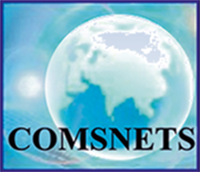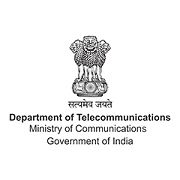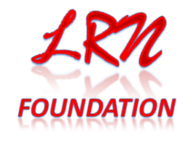Demos & Exhibits
 Demos and Exhibits Floor Plan. Click to Download.
Demos and Exhibits Floor Plan. Click to Download.
The 12th International Conference on COMmunication Systems and NETworkS (COMSNETS) will be held in Bangalore, India, during January 7-11, 2020. COMSNETS is a premier international conference dedicated to advances in Networking and Communications Systems. The conference is a yearly event for a world-class gathering of researchers from academia and industry, practitioners, and business leaders, providing a forum for discussing cutting edge research, and directions for new innovative business and technology.
We invite demos from researchers, startups, and corporates that showcase cutting edge information technologies and applications thereof. Every selected demo will be exhibited and given ample time for audience interactions. Corporate and research demos will have the option of longer demos.
Dedicated Demo Sessions
Continuing on the positive experience from last year, this year as well we are going to have additional dedicated demo sessions without any simultaneous paper sessions, thus allowing the entire attending community to visit the demo booths.
Why should you submit a Demo or Exhibit?
COMSNETS is the premier conference in its domain held in India. This is an unique opportunity to showcase your technologies and applications to an international audience that is helping build the next generation of technologies. To ensure you get the most out of the event we have the following planned:
- Interactions with expert panels
- Showcase to industry partners, potential recruits and potential investors
- Media coverage during the event
- Wider outreach as part of conference proceedings
Best Demo Awards
The COMSNETS 2020 Demo committee will review all submissions to select the accepted demos. All accepted demos will be considered for the Best Demo Award. A committee will decide the winner on-site after evaluating all demo presentations.
What to submit?
Submission Categories
There are following two different submission categories i.e. research demo, and product demonstrations.
Research Demo: Research prototype with novel and clear technical contributions are invited. Authors of accepted full papers are highly encouraged to submit original demo entry.
A maximum of 3-page extended abstract of the demo that captures motivation for the problem, the solution approach, results (if any), and a brief description of the technology demonstration. The abstract should use the same template as for the conference paper submission. Abstracts which do not adhere to the conference template will be rejected without review. All submissions must be in PDF format.
All the submitted entries will go through peer-review process. Accepted and presented submissions in this category will be published in the conference proceedings and submitted to Abstracting and Indexing (A&I) databases.
Start-ups and Product Demos: Proposals (maximum of 3 pages) to showcase products from startups and industries are invited in this category. Submissions in this category will require a proposal outlining the motivation and the technology/use case that will be demoed. All the sponsoring organizations are encouraged to submit an entry in this category.
How to Submit
Please make your submissions through EDAS submission portal. Submissions start on 01st Aug, 2019
Camera Ready Instructions
- Camera ready versions of the documents are needed only for Research Demos.
- Camera ready instructions are here. The paper limit for demo submissions is a minimum of 1 page and a maximum of 3 pages.
- The authors of the accepted papers should submit the camera ready paper and the copyright transfer via the EDAS site for their respective demos. This CANNOT be done over email.
Default Setup
The following default setup will be available for each demo (there might be minor last minute changes):
- A single 6 x 2.5 ft table.
- Extension power cable/multi-point (the organizers would highly appreciate if suitable power adapters are brought by the participants. India uses a 220V/5A power supply with Indian power sockets though in some cases the power sockets might allow for US style power plugs).
- A single easel for displaying any related poster that must be of size 4x3ft landscape mode.
Important Dates:
| Submissions Deadline | |
| Notification of Acceptance | |
| Camera-ready Submission | |
| Event date | 8--9th January 2020 (schedule) |
| Spotlight Presentation | 8th January 2020, 11:30am@GBR |
Spotlight Presentations
Venue: Grand Ball Room
On 8th January (Wednesday), there will be a spotlight presentation with every team given a 1 minute elevator pitch to talk about their demo on the main stage. This event will be immediately after the keynote and provides a golden opportunity to highlight aspects of your demo and invite the audience to visit your demo booth. In order to be part of this, please share a 1-slider (in PDF format) with us (amisaha@cisco.com, kuldeep@videoken.com) by January 7th - Noon (no extensions since we have to share this with the Audio Visual vendor).
Registration Fee Details
- Sponsoring companies have complimentary registration to Demos & Exhibits (MAX 2 people per demo).
- Non sponsoring companies have to pay Rs. 5000/- for each demo (MAX 2 people per demo). For this type of registration, one needs to use either the "Bank Draft" or "Wire Transfer" method to register (https://www.comsnets.org/registration.html#payment), as the regular registration form does not cater to demo registrations for the startup/product demos. Also, please send the wire transfer reference number/screenshot to Ms. Chandrika at comsnets.conference@gmail.com with a CC to the demo chairs (comsnets2020demos-chairs@edas.info).
- For research demos – each participant should have a main conference registration. Demos by authors with affiliations of academic establishments are considered research demos. Students can get discounted, student registration rates. This can be done via the usual registration process (https://www.comsnets.org/registration.html)
Sponsor Demos
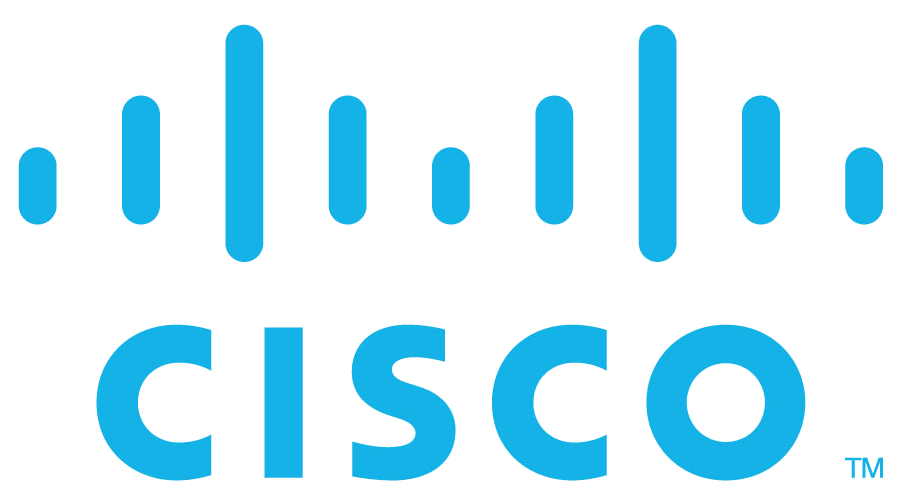
Applications and services that Edge technologies offer has made critical the efficient implementation and deployment of container-based network functions. The current SD-WAN applications make inefficient use of system resources, and will greatly benefit from rearchitecting the packet flow. We demonstrate our service plane optimization with the Snort application hosted as a container on Cisco Cloud Services Router (CSR).
Ramanathan Subramanian and Jeslin Puthenparambil (Cisco Systems, USA)
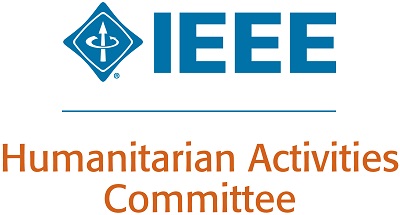
Dr. Dhanukumar Pattanashetti (IEEE, India)
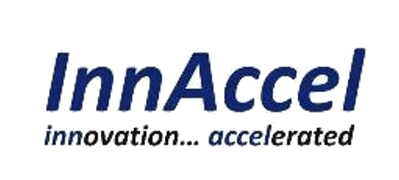
InnAccel Technologies Pvt Ltd. is a building a portfolio of novel medical devices designed, engineered, and priced for global Emerging Markets. We use the Stanford Biodesign method to identify and validate critical unmet clinical needs in India.
Using our proprietary Product Engineering & Development Platform, a conceptual solution is designed to address a selected need, leading to the development of a regulatory certified product.
This systematic approach has led to the development of multiple products in three focus areas - Critical Care, Maternal & Child Care, and ENT.
Darien Rodrigues and Adaikkammai S (InnAccel Technologies, India)

As digital media grows more complex, a data management platform that can manage data across multiple sources in order to enable speed of insights and actions is essential to succeed in an intensely competitive market.
Although RESTful API architecture has been existing for a couple of decades, it requires typical development cycle, overwhelming functional dependencies and productivity losses and is primarily for developer audience. Some of the other challenges are data level security and dealing with large data sets.
This paper will highlight the no development, no deployment, no testing required API Framework using which functional owners can share and expose data securely in just under 5 minutes. Powered by a serverless architecture, the application uses a tiny infrastructure footprint. By supporting one API signature across all data platforms, users are able to consume data without a steep learning curve. The framework also supports advanced data processing constructs that allow joining of multiple APIs, Pipe operator and Pipeline stages including java-script style execution for calculation and summarisation.
An effective data management platform will allow democratizing of data exploration, generation of insights & integration into business processes thus giving the business an operational and financial edge.
The demo will be an audio-visual presentation of the web application ZDAF.
The following aspects of zero deployment API Framework will be demonstrated.
- The digital catalog - how to discover data
- Registering an API dynamically
- Advanced features of API implementation - chaining, pipeline, javascript execution.
- Using Serverless computing to share data across applications.
Ramachandran Krishnamurthy, Saritha Kamath and Deepak Nagaraja (Cisco Systems, India)

The omnipresence of wired and wireless connections and network devices has significantly transformed our everyday life by connecting people, machine, and environment together in a seamless manner, which has triggered many exciting Internet of Things (IoT) applications and new devices to onboard the network. For any network deployments, security is the key factor. Unknown Wi-Fi and IoT devices are subjected to compromise, and their operation may be taken over by malicious actors. If this happens, the Wi-Fi and IoT devices may be used to attack its own, or other networks. Many devices can fake their identity and cannot be segmented as per configured policies. IOT devices and network elements are largely unsecured and increases the enterprise attack surface. Encrypted malware skips all checks which may result in spreading malware into the network. Static threat identification and mitigation are no longer sufficient and requires a more proactive way of handling real time threats.
With growing number of Wi-Fi and IOT devices and trend where identity and OS can be hacked it is critical for customers to get deeper visibility of the devices connecting onto the network, identity and securely onboard them and make sure devices are behaving correctly and act accordingly if any anomaly is detected.
Keeping all the above in mind there was a need for proper device profiling which allows us to gather device type and other valuable information about the device by inspecting packets that are sent by these devices in the network.
Shiva Maheshuni, Valiveti Vamsi Krishna and Kaarthik Sivakumar (Cisco Systems, India)

In this demo, we will showcase latest advances in Bing Search technology and Innovation in user Input modalities, which is lowering the barrier in connecting rich knowledge and online resources with users across the world in various languages. With Microsoft Math, students can now search the web by taking a picture of a math problem or writing it digitally on screen, without needing to type a complex mathematical equation in a query box. Microsoft Math instantly recognizes the math query, and provides step-by-step explanation, interactive graph visualization, similar problems from the web, and online video lectures instantly on a mobile device, with content localized in various Indian regional languages.
Vageesh Chandramouli, Siding Chen, Jeff DeVries, Darshan Kattera, Honggang Lai, Yumao Lu, Vishnu Navda, John Slevinsky, Chris Zorn (Microsoft)
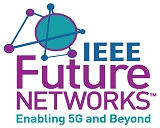
Ashutosh Dutta, Munir Mohammed (IEEE Future Networks)
Startup and Product Demos

NetSim is a leading network simulation and emulation software for protocol modeling and simulation. It enables modelling, simulation and analysis of a wide range of wired, wireless, mobile and sensor networks. NetSim is being used by over 400+ customers across 25 countries.
Pranav Vishwanathan and Shashikant Suman (TETCOS, India)

Duplicate invoice payment is one of the most prominent challenges faced by accounts payable operations. Two invoices are duplicate not only when they exact copies but also if there are similar or overlapping fields. For instance, two invoices may have different invoice numbers, dates and amounts; however, the overlap in invoice line-items could make it a duplicate pair. Duplicate invoices occur far more often than organizations realize (around 0.1% total invoice payments) and the overlapping invoice scenario is the big fraction of duplicate invoices.
Our solution, Digital Auditor, is an artificial intelligence-based duplicate Invoice detection solution which is first-of-its-kind solution in the B2B Supplier Payments Industry. The traditional industry practice of identifying exact duplicate copies of an invoice involves matching corresponding meta-data fields such as invoice no., supplier ID etc. captured in ERP(ARIBA/ORACLE). Digital Auditor reads the invoice copies and looks for several fields to detect similar or overlapping invoices that are not exactly the same. This is an arduous task but is highly rewarding with no other existing solution.
Himanshu S Bhatt (AI Labs, American Express, India); Shourya Roy (Manager, India)
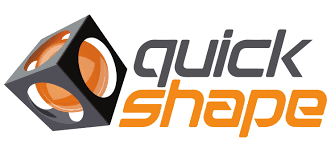
This is product demonstration by a company that is revolutionizing the entire design, prototyping, and batch production needs. They will be demonstrating their 3D printing technology and the services they offer.
Ronit Shetty and Syed Irfan Zaher (Quick Shape, India)

Academic conferences steer a scientific field's progress year after year and it is imperative to preserve and better organize the vast amount of knowledge, that is created in these conferences. We demonstrate a product 'ConfTube' which provides an indexed and enriched interface to all the conference videos.
Here are some of the features that are provided by ConfTube to the end-users. 1) Powerful Video Discovery: Search for your favorite paper, talk or a topic even when it is not part of the video title or description. 2) Superior Video Navigation Experience: Use an AI-generated table of contents (ToC) and Phrase Cloud to navigate inside a video. For ex, quickly see the results of a paper before diving deep on the approach. 3) Easy Sharing: Share a snippet of the video with your peers and colleagues.
ConfTube has been deployed at top AI conferences including NeurIPS, ICCV, ICLR, ICML, ACM KDD, etc
Kuldeep Yadav (Videoken, India); Raj Sharma (VideoKen, India)
Research Demos
In this paper, we bring a human in the loop, and enable a human teacher to give feedback to a keyword extraction framework in the form of natural language. We focus on the problem of keyphrase extraction in which the quality of the output can easily be judged by non-experts.
Nishtha Madaan (IBM Research AI-India, India), Hima Patel (IBM Research AI-India, India), Sameep Mehta (IBM Research AI-India, India), Mudit Saxena (Shiv Nadar University, India)
With the ubiquitous nature of WiFi devices and WiFi networks around us, which continuously transmit and receive high bandwidth data, these transmission channels can be used as an effective sensing medium for detecting movements. With the use of Machine Learning, we develop a model using the features of the channel state information to train and predict these movements accurately. This paper proposes a demonstration harnessing the low-cost WiFi-based IoT for the detection of movements. Such a setup will facilitate the usage of movements like hand gestures to carry out common tasks such as changing the television channel, changing slides during a presentation, no-controller wireless gaming, etc. We achieve an F1 score of 0.99 with the latency of 45.75ms.
Yogesh Namdeo Dasgaonkar, Gargi Balasubramaniam and Vinayak Naik (BITS Pilani Goa, India)
As machine learning algorithms make further inroads into society, calls are increasing from multiple stakeholders for these algorithms to explain their outputs. Moreover, these stakeholders, whether they be government regulators, affected citizens, domain experts, or developers, present different requirements for explanations. To address these needs, we introduce AI Explainability 360, an open-source software toolkit featuring eight diverse state-of-the-art explainability methods, two evaluation metrics, and an extensible software architecture that organizes these methods according to their use in the AI modeling pipeline. Additionally, we have implemented several enhancements to bring research innovations closer to consumers of explanations, ranging from simplified, more accessible versions of algorithms, to guidance material to help users navigate the space of explanations along with tutorials and an interactive web demo to introduce AI explainability to practitioners. Together, our toolkit can help improve transparency of machine learning models and provides a platform to integrate new explainability techniques as they are developed.
Vijay Arya (IBM Research, India)
The Internet provides a platform for various commercial activities and it is important to ensure that it remains a level playing field for all the players. Several countries have enacted laws such that the Internet remains neutral by prohibiting preferential treatment of traffic of one application or content over the other. However to enforce such regulations one needs to detect any violations. In this work we demonstrate a method to identify non-neutral behavior by comparing the quality of service received by different applications `when they experience similar network conditions.'
Vinod S Khandkar (IIT-Bombay, India); Manjesh K Hanawal (Indian Institute of Technology Bombay, India)
Mixed reality is one of the trending technology. It provides an excellent platform to the users, as it includes good graphics and animations. Mixed reality provides many applications in gaming, education, healthcare etc. This domain, can be considered for medical purposes i.e., rhinoplasty, which is a surgical procedure used to correct the nose and other parts of the face. Sometimes the result obtained after the surgery, is not convincing. This paper illustrates the method to overcome this problem by using Mixed Reality Toolkit(MRTK) over Unity gaming platform. Therefore the patient and the doctor can have discussion and edit according to the patient's convenience and further proceed to surgery.
Swathi B H, Manasvi J Maasthi, Gururaj HL, Janhavi V and Harshitha K (Vidyavardhaka College of Engineering, India)
"We describe N V iZ a graphical visualization tool developed to visualize log data generated by network security devices and services like firewall, intrusion detection system and domain name system. It can generate interactive visualization graphs identifying popular websites visited, active users, DNS query patterns, IDS alert types and their distribution and also peer network connections of infected and non-infected machines."
Amit Meena and Neminath Hubballi (Indian Institute of Technology Indore, India)
Industry 4.0 is the latest trend in the manufacturing sector that focuses on intelligent manufacturing and smart factories. This leads to opportunities in automation, optimization, asset management and predictive maintenance, which helps reduce downtime and increase revenue. In this paper, we propose the solution that was created for a particular SMT PCB manufacturing facility in Mysuru (Vinyas IT), the features it has to offer and the methodologies that were implemented in order to achieve our goals. We will also highlight the important aspects of the solution that will be showcased during the demonstration and the impact of our solution.
Gaurav Bhandari and Prakash Hiremath (Indian Institute of Science, India); Ashish Joglekar (Robert Bosch Center for Cyberphysical Systems, India); Anupama Kulkarni (Vinyas IT, India); Devadatta Kulkarni (TCS Innovation Labs, USA); C Mahadeva (Vinyas IT, India); Sampad Mohanty (Indian Institute of Science Bangalore, India); Raghunath D (Indian Institute of Science, India); M b Raju (Vinyas IT, India); Rajeev Shorey (TCS Innovation Lab, Cincinnati & Bangalore, India); Rajesh Sundaresan (Indian Institute of Science, India)
In the recent times, smartphones or cell phones have become the most widely used for communication. This application mainly aimed to provide a simplified management of prohibitions enforced in public places by developing an application to control the different mobile features. There are many places which includes hospital, religious places, research centers, museums, corporate offices, petrol pumps, universities etc., where they clearly mentioned that, "usage of mobile phones is prohibited", "keep your mobile phones silent", "usage of camera is restricted", etc. many times people forget to switch off their mobile phone or forget to switch their mobile phone to silent or vibrate mode, which is not feasible. Capturing of photos and videos even in the places where the mobile phones usage is restricted. In this paper, we develop an application that provides complete control on automated profile switching and camera disabling of mobile phones.
Tanuja U (Vidhyavardaka College of Engineering, India); Seema CK (Visvesvaraiah Technological University, India); Gururaj HL and Janhavi V (Vidyavardhaka College of Engineering, India)
Visible Light Communication (VLC), which operates in the Terahertz band, is theoretically capable of terabits/second data speeds. However, traditional state-of-the-art VLC has largely been limited in the data rates, which also trade off with communication range. A common approach to modulation in VLC is the use of ON-OFF Keying (OOK), where a binary bit 1 is mapped to a high or ON state of the light emitter and bit 0 to a low or OFF state. While there have been approaches to improve the spectral efficiency through other modulation schemes such as color-shift-keying (CSK), frequency-shift-keying (FSK) and orthogonal frequency division multiplexing (OFDM), the fundamental mapping of intensity of light emitters to high and low states is still required. In this work, we explore a novel approach for using multi-level or M-ary amplitude modulation to encode symbols in VLC. We demonstrate a technique that uses machine learning of the VLC channel state to improve demodulation of M-ary signals in a LED-Photodiode VLC system.
TV Sethu Raman and Susan Elias (Vellore Institute of Technology Chennai, India); Ashwin Ashok (Georgia State University, USA)
"Parking in cities is regulated by policies prepared by the city council, and are designed to maximize service while keeping sufficient road space for unobstructed traffic flow. Keeping this in view, enforcement agencies mandate vehicles to not park at locations that are marked with no-parking signages. However, in developing regions of the world, a weak compliance to this policy is often observed.
StreetHAWK is the first-of-its-kind real-time, automated, city-scale system that addresses this problem using visual sensing and edge computing models on readily available smartphones. The system overcomes the challenges of small object detection, limited visual ranging (with embedded single camera phone units), and other sources of detection inaccuracies to identify (on an average) 80% of on-street parking violations compared to manual approaches."
Alok Ranjan (Virginia Commonwealth University, USA); Karpagam Murugappan (TCS Research & Innovation, India); Prasant Misra (TATA Consultancy Services, India); Arunchandar Vasan (Tata Consultancy Services, India); Sunil Krishnakumar (TCS Research & Innovation, India); Anand Sivasubramaniam (Penn State & Tata Consultancy Services, USA)
While 5G systems are being deployed across the globe in a phased manner, trust models for communication between the User Equipment (UE) and the core network play a vital role in fulfilling the network goals promised by 5G. Towards that end, the 5G - Authentication and Key Agreement (5G-AKA) protocol has been standardised by the 3GPP consortium after multiple iterations and corrective responses. Despite this progress, there is a requirement to collate information from multiple ETSI technical specifications and several research contributions to implement a standardised security architectural model for 5G networks. Identifying the absence of single point repository containing 5G security protocols, this demonstration provides first hand collation and description of state-of-the-art details in simple and unified manner. In this demonstration, we implement the 3GPP compliant 5G-AKA protocol on a network of XBee S2C devices wherein the protocol involves a sequence of modules involving secure authentication, key exchange and payload transmission. To implement the security protocol, we extract the precise recommendations of 3GPP and also use open source algorithms wherever the implementation is left open as proprietary solution. Other than implementing standard modules from 3GPP specifications, we also showcase novel key exchange and provenance-recovery mechanisms that potentially fit the 5G standards in the framework of device-to-device (D2D) communication.
Sriraam SV and Suraj Sajeev (IIT, Delhi, India); Rohit Joshi (Indian Institute of Technology, Delhi, India); Amogh Vithalkar (Indian Institute of Technology Delhi, India); Manish Bansal (IIT, Delhi, India); Harshan Jagadeesh (Indian Institute of Technology Delhi, India)
"In a smart IoT system, multi-sensing at a field node is a typical scenario. The examples considered in this study are pollution monitoring and smart energy metering. In such applications, energy sustainability and communication and storage resource usage optimization are two of the key issues of interest. In this study, on one hand it is intended to develop indigenous beyond state of the art multi-sensing boards with the inherent smartness in energy replenishment and sensing/communication activities. On the other hand, smart data collection and processing at the end node (fog node or edge node) is of interest primarily from efficient communication bandwidth usage perspective.
On the first exercise towards energy sustainable IoT sensing and communication board design, we have designed a prototype for a 5G capable environmental air pollution monitoring system. The system measures concentrations of NO2, ozone, CO and SO2 using semiconductor sensors. Further, the system gathers other environmental parameters like temperature, humidity, PM1, PM2.5 and PM10. The prototype is equipped with a GPS sub-system for accurate geo-tagging. The board communicates through Wi-Fi and NB-IoT. The board is also equipped with energy harvesting power management, and is powered through solar energy and battery backup.
On the second exercise, a working model of a smart IoT device with a data pruning subsystem is designed, where a smart energy meter is considered for an example application. As a proof of concept we plan to demonstrate data compression at the edge to save bandwidth required for data transmission to a remote cloud. At each smart meter, sparsity of data is exploited to devise an adaptive data reduction algorithm using compressive sampling technique such that the bandwidth requirement for smart meter data transmission is reduced with minimum loss of information. The Smart Energy Meter is WiFi and NB-IoT enabled. This meter is capable of logging multiple energy consumption parameters.
The overall objective has been demonstrating the ability of beyond state of the art circuits and system design for IoT communications, wherein context specific intelligence is applied at the at the node. The broad philosophy in this study can be readily extended to any chosen IoT application."
Wadood Ahmad Khan (Indian Institute of Technology Delhi, India); Payali Das (IIT Delhi, India); Sushmita Ghosh (Indian Institute of Technology, Delhi, India); Mayukh Roy Chowdhury and Sharda Tripathi (Indian Institute of Technology Delhi, India); Sandeep Kaur (Indian Institute of Technology, Delhi, India); Shouri Chatterjee and Swades De (Indian Institute of Technology Delhi, India)
Demos & Exhibits Chair

Amit Kumar Saha
CISCO, India

Kuldeep Yadav
VideoKen, India
